Reverse Dropshipping: Is It a Profitable Business Model in 2025?
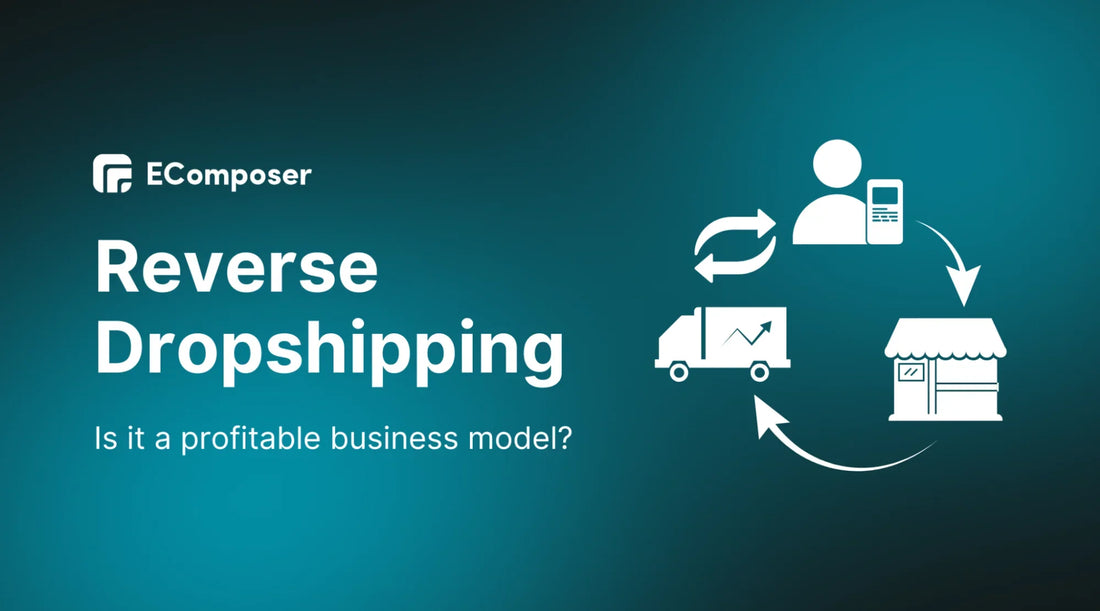
Table Of Contents
Within the eCommerce world, you undoubtedly encountered dropshipping, which operates by sending products straight from Chinese suppliers to customers situated in the United States, along with other European or wealthy regions. But what if we flipped that model on its head? The global eCommerce family now embraces a speedier version of dropshipping called reverse dropshipping, which is recently emerging as the preferred market choice.
In this blog, we’ll break down all about reverse dropshipping, how it works, what drives it, its pros and cons, and exactly how to get started. Let’s dive in.
What Is Reverse Dropshipping?
Reverse dropshipping is an eCommerce business model where high-quality products are sourced from developed countries and sold in emerging markets that typically import such goods.
While traditional dropshipping often involves selling low-cost products made in countries like China or India to customers in the U.S. or Europe, reverse dropshipping does the opposite. The products are made outside of these countries (often in places like the U.S., Germany, or Japan) and then sold within them.
China’s eCommerce market is forecasted to reach a staggering $3.37 trillion by 2025. That massive demand for online goods, especially premium imports, makes reverse dropshipping an increasingly attractive opportunity for forward-thinking sellers.
How Does Reverse Dropshipping Work?
At first glance, reverse dropshipping is a completely new method. Still, in fact, it works very similarly to traditional dropshipping, with one key difference: your suppliers are based in developed countries, and your customers are in emerging or less developed markets.
So instead of sourcing cheap goods from places like China or India and selling to Western consumers, you need to source premium goods from countries like the US, Canada or Germany and sell to markets like China, India, the UAE, or Brazil, where high-quality imports are in demand but often hard to find.
So, how exactly does reverse dropshipping work?
- Product Sourcing: Your e-commerce business needs to collaborate initially with suppliers situated in developed areas who offer unique products like artisanal coffee, eco-friendly skincare, as well as high-performance tech accessories. The products you select are ones that do not reach standard markets within the target regions.
- Customer Places an Order: A customer from your target market visits your online store and places an order.
- Forward the Order to Your Supplier: Once the order comes in, you pass it along to your trusted supplier. No need to store or pack anything yourself. You're essentially the bridge between premium goods and eager buyers.
- Supplier Handles Fulfillment: Your supplier ships the product directly to your customer. Depending on your strategy, this could be via international shipping or through a local fulfillment center if you're scaling up.
- Keep the Profit: You set your retail price higher than the supplier’s cost to cover shipping, potential taxes, and your profit margin. Since you’re offering exclusive, premium products, customers are typically willing to pay more, giving you higher margins than traditional dropshipping.
Pros & Cons of Reverse Dropshipping
Pros of Reverse Dropshipping
|
Higher Profit Margins |
You can mark up prices and benefit from higher margins since consumers in emerging markets are ready to pay more for high-end, imported goods. |
|
Less Competition |
Reverse dropshipping is still a relatively untapped market compared to traditional dropshipping, making it easier to stand out. |
|
Affordable Marketing Costs |
Running digital ads in countries like India, the Philippines, or Mexico is more cost-effective than in the U.S. or Europe. |
|
Huge Market Potential |
Massive and growing markets like China, Indonesia, and Bangladesh offer high demand for imported, premium products. |
|
Premium Brand Positioning |
Selling high-end, recognizable products helps establish your store as a trusted, quality-focused brand. |
|
Simpler Return Policies |
Developed-country suppliers tend to offer better return and refund systems, reducing customer service hassles. |
|
Availability of Superior Products |
High-quality and unique products from reputable U.S. or European suppliers are available for distribution through partnership arrangements. |
|
New Market Opportunities |
By targeting less saturated regions, you can discover niche communities and cater to unique consumer demands. |
Cons of Reverse Dropshipping
|
Complex Import Regulations |
Emerging markets demand strict legal and customs requirements that might need expert assistance. |
|
Shipping Delays & Tariffs |
International shipping introduces customs delays and additional fees that can affect profits and delivery times. |
|
Language Barriers |
Legal documents, product descriptions, and customer support may need translation to avoid misunderstandings. |
|
Cultural Differences |
Different preferences and buying behaviors require market research and localized strategies to succeed. |
|
More Complicated Logistics |
Longer shipping distances and unfamiliar customs processes add complexity to logistics and order tracking. |
|
Regulatory Compliance |
Each market has its own safety standards, labeling laws, and import rules that must be met consistently. |
|
Challenging Supplier Relationships |
Developed-market suppliers may have higher expectations, stricter quality control, and less flexibility. |
|
Higher Operational Costs |
Premium products, international shipping, legal compliance, and localization all contribute to a higher cost structure. |
How To Start a Reverse Dropshipping Business in 2025
Step 1: Choose a Niche and Identify Your Audience
The first thing you need is a profitable niche. High-quality or difficult-to-find Western products that are in demand in nations like India should be your main focus if you are trying to reach Asian consumers.
- Use Google Trends to check product demand in your target region.
- Explore top-selling categories on dropshipping directories like Spocket, SaleHoo, or Dropshipping.com.
- Tools like Intelligynce can help you analyze winning products based on price, competition, and profit margins.
After selecting your niche, do in-depth market research to define your ideal customer.
- Who are they?
- What problems do they face that your product solves?
The more specific you get, the more targeted your marketing can be.
Step 2: Find a Reliable Reverse Dropshipping Supplier
The supply chain requirement for your new business demands Western suppliers instead of the Chinese vendors typical for traditional dropshipping.
- Use supplier directories like Dropshipping.com, Doba, Spocket, AliExpress (US section), Walmart, or Home Depot.
- Compare suppliers based on: Product quality and origin, Shipping options and timelines, MOQ (Minimum Order Quantity) and bulk discounts, Integration compatibility with your chosen eCommerce platform
Prior to final commitment, you should verify quality and delivery time by testing ordered products.
Step 3: Choose Your Selling Platform
You have three main options:
1. Set up your own business in the target country:
China-based companies should register as Wholly Foreign-Owned Enterprises (WFOE) for legal selling rights in the country. A WFOE registration enables legal country sales yet demands facilities and official permits as well as a domestic bank institution for business.
2. Sell through major platforms like Tmall Global or JD.com:
- Tmall Global lets foreign businesses sell directly to Chinese consumers without a Chinese entity. (Costs: $25,000 deposit, $5,000–$10,000 annual service fee, 2–5% commission).
- Shopify + JD.com partnership allows you to tap into JD.com’s market with less hassle (Commission fees: 2–8%).
3. Build your own eCommerce store
Platforms like Shopify, Wix, or WooCommerce offer a variety of solutions that make building a website easy. In particular, if you use Shopify, you will get:
- User-friendly interface and drag-and-drop editor
- Tons of professional themes (free and paid)
- Integration with many dropshipping tools
- A treasure trove of paid and free apps like EComposer Page Builder, EcomRise, Stockify, SectionAI, etc.
You can even outsource the creation of your store to services like The4 Service, where you put in your requirements and get a professional Shopify store.
Moreover, if you are a first-time Shopify store owner, you will get the Shopify $1 for 3 months plan. This offer allows you to use any Shopify plan for just $1 for 3 months. You can then continue paying to use the plans or stop without any additional charges.
Step 4: Translate and Localize Your Store
Localization is key to winning trust and increasing conversions.
- Translate your store content into the native language of your target audience.
- Avoid relying solely on Google Translate — instead, use professional translators or Shopify Markets for higher accuracy and cultural nuance.
- Localize: Product descriptions, Checkout pages, Customer service messaging, Currency, and payment methods
Even if you’re selling via platforms like JD.com or Tmall, having your own localized website builds brand credibility and supports long-term growth.
Step 5: Market and Promote Your Store
Your store is ready. Now it’s time to bring in traffic and convert visitors into customers.
- Start with SEO: Items on product pages, together with content in your blog, must be optimized by using keywords specific to your targeted language.
- Run ads on local platforms: For China, try WeChat, Weibo, or Baidu; for India, try Facebook, Instagram, and Google Ads.
- Use Email Marketing: Send welcome emails, product recommendations, and abandoned cart reminders.
- Leverage Influencers in the region to promote your brand authentically.
- Boost average order value with: Cross-selling and upselling, Bundle discounts, Referral programs, and loyalty rewards
And don’t forget video marketing! Create a visual depiction of your product features alongside their benefits to ensure maximum impact in market competition.
Top 10 Profitable Reverse Dropshipping Products To Sell
How We Picked the Top 10 Products for Reverse Dropshipping
To ensure our recommendations are valuable, relevant, and profitable for 2025, we used the following criteria to select the top 10 reverse dropshipping products:
- Product Origin & Reputation: We prioritized items made in developed countries known for their high manufacturing standards (e.g., USA, Japan, Germany), as these carry strong trust signals in emerging markets.
- Demand in Emerging Markets: We researched search trends, social media conversations, and marketplace data (like Amazon Global, Lazada, Flipkart) to identify products in high demand across key reverse dropshipping regions like India, Brazil, Nigeria, and the Middle East.
- Perceived Value & Premium Appeal: Each product had to offer a premium feel or brand value that justifies higher pricing in the target market, such as organic certification, designer branding, or cutting-edge technology.
- Shipping Feasibility & Durability: We chose products that are relatively easy to ship internationally with minimal risk of damage, avoiding fragile or extremely bulky items that drive up shipping costs or customs risks.
- Profit Margin Potential: Products were evaluated based on wholesale-to-retail markups, with a focus on goods that allow for 40–70% margins while still offering perceived value to customers.
- Low Local Availability: Items not widely available or accessible in emerging markets were favored to reduce local competition and increase customer demand.
Looking to launch your reverse dropshipping business with products that actually sell? Here's a list of 10 high-demand items perfect for exporting from the West to Asia. These products are popular, premium, and come with healthy profit margins.
1. Gaming Consoles
Asia’s population embraces gaming consoles as premier technology products because of widespread affinity for these devices. Players can experience consoles as more than entertainment devices because of their impressive technology capabilities.
Top Brands: PlayStation, Xbox, Nintendo Switch
2. Specialty Coffee Machines
High-end coffee machines experience growing demand among Asian consumers who practice coffee culture both at home and in their coffee shops. High-end coffee machines provide excellent profit-making opportunities while delivering reliable business revenue.
Top Brands: Breville, DeLonghi, Nespresso
3. High-end laptops
Asian consumers who understand technology need premium laptops to fulfill their requirements for work and gaming along with creative project development. Customers place their trust in these products due to their premium costing structure.
Top Brands: Apple, Dell, HP
4. Luxury Watches
Many Asian markets consider luxury watches as both functional timekeeping tools and expression of fashion as well as status indicators. Acquiring pre-owned watches certified by luxury brands will lead to greater profit margins.
Top Brands: Rolex, Omega, Tag Heuer
5. Skincare Products
Western skincare products enjoy a solid reputation in Asia for their innovation and quality ingredients. The demand is high, especially for anti-aging and hydrating formulas.
Top Brands: La Mer, SK-II, Sisley Paris
6. Designer Handbags
High-end fashion is always in style, and designer handbags from the West are a big hit in Asia. Whether new or outlet finds, these products carry strong brand recognition and markup potential.
Top Brands: Chanel, Hermès, Louis Vuitton
7. Branded Outdoor Gear
The trend in Asia includes various outdoor adventures which span from mountain hiking to weekend camping activities. Western companies provide durable high-performance goods that Asian consumers increasingly desire.
Top Brands: The North Face, REI, Garmin
8. High-End Kitchen Appliances
As modern kitchens gain popularity in Asia, consumers are investing in upscale appliances that blend function and aesthetics. This is a premium niche with great resale value.
Top Brands: Viking, Wolf, Miele
9. Premium Pet Products
Asia experiences an explosive growth in its pet care market sector. Pet owners prefer to spend money on premium quality food and accessories including toys especially if such products come from well-known Western brands.
Top Brands: Royal Canin, Chewy, Ruffwear
10. Home Workout Equipment
With fitness trends on the rise, more people in Asia are opting for home gyms. Top-tier workout machines and accessories from the West can fill this growing demand.
Top Brands: BowFlex, NordicTrack, Exigo
5 Best Suppliers for Reverse Dropshipping
BrandsGateway
BrandsGateway receives positive feedback because it provides authentic designer items through services that cater to dropshippers. The website emphasizes its speedy shipping and its ability to work with existing online stores. Their prices stem from the high cost of premium merchandise, so market examination should be precise for earning profits. Reviews from customers suggest that they must create a business account in order to utilize their provided services.
AliExpress
AliExpress is a massive online retail marketplace primarily featuring products from Chinese suppliers. It offers a buyer protection program that can help resolve disputes. However, shipping times can be long, as many suppliers are located in China. It's advisable to look for suppliers offering "AliExpress Standard Shipping" for potentially faster delivery; some suppliers also have overseas warehouses for quicker shipping to specific regions.
Spocket
Spocket is a dropshipping platform that focuses on connecting retailers with suppliers primarily located in the USA and Europe. Spocket offers easy integration with popular e-commerce platforms like Shopify and WooCommerce and provides automated inventory updates, which helps prevent selling out-of-stock items. It also offers order tracking information for customer orders.
Modalyst
The supplier network of Modalyst directs online stores to its selection of dropshipping suppliers that consists of independent brands alongside AliExpress suppliers. The platform presents handpicked products that focus on premium and eco-friendly brands in addition to trendy products. The platform operates between online shops such as Shopify and Wix while it conducts automated product import and order fulfillment.
SaleHoo
SaleHoo is a supplier directory that vets and verifies its listed wholesalers and dropshippers. This vetting process reduces the risk of dealing with unreliable or fraudulent suppliers. Through its extensive product range SaleHoo provides extensive market research tools which assist users in choosing suitable market segments along with leading products.
Common Challenges in Reverse Dropshipping
Reverse dropshipping presents exciting profit possibilities although it involves significant obstacles for business success. Knowledge of typical business difficulties in the early stages allows you to create a stronger business foundation that succeeds against challenges. Let’s break down what to watch out for and how to tackle it.
Higher Shipping Costs and Import Duties
International shipping isn't cheap, and when you add customs duties into the mix, your profit margins can shrink fast.
How to manage it:
- Research import duties in your target market and factor them into your product pricing.
- Offer free shipping on orders above a certain value to encourage larger purchases.
- Clearly itemize costs (product + shipping + duties) on high-ticket items.
- If the customer is responsible for duties, add a disclaimer on your checkout page to avoid misunderstandings.
Payment Gateway Restrictions
Some payment processors charge higher fees or limit cross-border transactions, leading to failed payments or lost sales.
How to manage it:
- Use globally trusted gateways like PayPal or Stripe.
- Integrate popular local payment methods in your target country.
- Provide a variety of payment methods to increase conversions and lower friction.
Legal and Compliance Issues
Every country has unique regulations around imports. Some products require permits, while others are restricted altogether.
How to manage it:
- Research import laws thoroughly before choosing products.
- Work with an experienced customs broker to avoid legal pitfalls.
- Start with a small product range in one market to learn the rules before expanding.
- Send test shipments to identify any unexpected restrictions firsthand.
Finding Reliable Suppliers
Not all suppliers are eager to work with dropshippers, especially when shipping to international, emerging markets.
How to manage it:
- Build trust by starting with small orders or offering bulk commitments.
- Be transparent about your business model from the beginning.
- Choose suppliers familiar with international shipping paperwork and customs requirements.
- Always document clear agreements around pricing, responsibilities, and timelines.
Differences Between Reverse Dropshipping and Traditional Dropshipping
|
Reverse Dropshipping |
Traditional Dropshipping |
|
|
Product Sourcing and Supply Chain |
Products are high-quality, premium, and often branded, sourced from developed markets like the USA, Europe, or Japan. Focus is on quality and prestige. |
Products are mass-produced and sourced from low-cost regions like China. Focus is on affordability and trendiness. |
|
Target Market and Customer Base |
Targets consumers in emerging markets (e.g., India, Brazil) aspiring to own premium products from developed countries. |
Targets consumers in developed markets (e.g., USA, UK) seeking affordable or trendy items. |
|
Product Quality and Perceived Value |
High-quality, durable, and branded products with strong reputations and perceived exclusivity. |
Typically low-cost, unbranded, or generic products with inconsistent quality. |
|
Pricing Strategy and Profit Margins |
Higher product costs but healthier profit margins (50 %+), driven by scarcity and high demand. |
Low product costs but slim profit margins (10–30%) due to heavy competition. |
|
Shipping and Logistics |
More reliable logistics from developed countries, often using premium couriers like DHL or FedEx. Delivery in 1–3 weeks. |
Long shipping times (2–6 weeks) from China using budget carriers like ePacket. |
|
Level of Competition |
Lower competition but requires more expertise, supplier vetting, and market understanding. |
Extremely high competition due to low barriers to entry and mass-market appeal. |
|
Branding and Customer Trust |
Easier to build trust with reputable brands; higher customer loyalty and repeat purchases. |
Harder to build trust due to generic products and inconsistent quality; low repeat purchase rates. |
|
Market Research and Expertise |
Requires deep market research, cultural understanding, and regulatory knowledge. |
Relies on quick trend spotting and surface-level market research. |
|
Marketing Approach |
Targeted, localized marketing with an emphasis on product quality, brand story, and exclusivity. |
Heavy use of digital ads targeting broad audiences with emphasis on low prices. |
|
Scalability and Long-Term Viability |
Stronger long-term viability with brand loyalty, potential to scale into multiple emerging markets. |
Challenging scalability due to high competition and the need to chase new trends constantly. |
Frequently Asked Questions
1. Is reverse dropshipping legit?
Yes, reverse dropshipping is a legitimate business model. As long as you comply with the import and export regulations of the countries you operate in and ensure your products do not infringe on any copyrights, you are on the right track. It is also important to have clear terms and conditions outlined on your website to protect your business and build customer trust.
2. Which country can I reverse dropship from?
In general, “Made in” labels are most trusted when they feature countries like Germany, the USA, or the UK. Consumers around the world highly value products from these regions and are often willing to pay a premium for them. If you are sourcing from English-speaking suppliers, the USA, the UK, and Canada are your best options.
3. How can I ensure customer satisfaction as a reverse drop shipper?
Reduce returns and consumer complaints by providing high-quality products. Customize your material to your target audience's tastes and translate your website into the local tongue. To preserve client happiness and trust, keep them updated on the status of their orders on a regular basis.
4. Why is it called reverse dropshipping?
In traditional dropshipping, products are shipped from exporting countries (such as those in Asia) to importing countries (like the USA). Reverse dropshipping works the opposite way: products are sold from developed markets to emerging markets, which is why it's called "reverse" dropshipping.
5. Is it hard to enter a foreign market?
Breaking into a foreign market can be tricky, but how difficult it is will depend on factors like language barriers, import rules, and local customs. For instance, if you plan to reverse dropship to Kenya, you may find communication smoother since English is widely spoken there.
6. Can I work with multiple suppliers as a reverse dropshipper?
Yes, working with multiple suppliers is absolutely possible in your dropshipping business. It can be beneficial when a single supplier doesn’t have all the products you need. Just ensure each order is sent directly to the appropriate supplier. However, keep in mind that customers may receive their items in separate shipments if they order from different suppliers.
7. Can I make $1,000 a month with dropshipping?
With careful product selection, earning $1,000 a month is definitely achievable. Reverse dropshipping often leads to higher profit margins compared to traditional dropshipping, as you're offering premium products to markets that are willing to pay a premium price.
Final Thoughts
The promising reverse dropshipping method provides business opportunities primarily to entrepreneurs who seek to access premium market demands in emerging markets. Mindful investigation along with dependable suppliers and thorough strategy development will lead to substantial customer loyalty and higher profit margins in reverse dropshipping models. The global market has future opportunities for those who want to work with reverse dropshipping solutions.









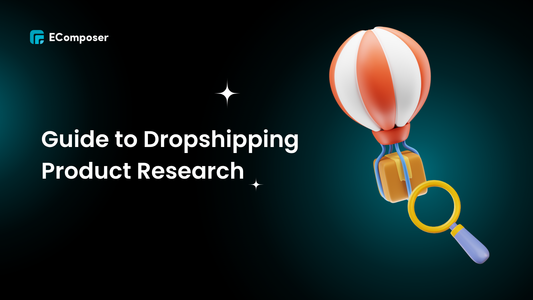
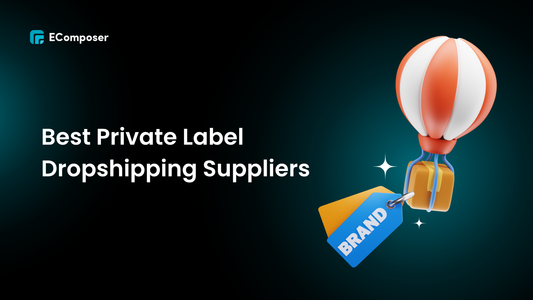
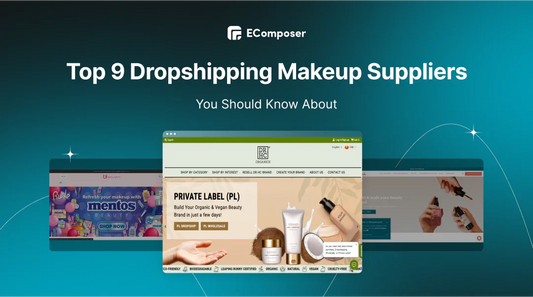

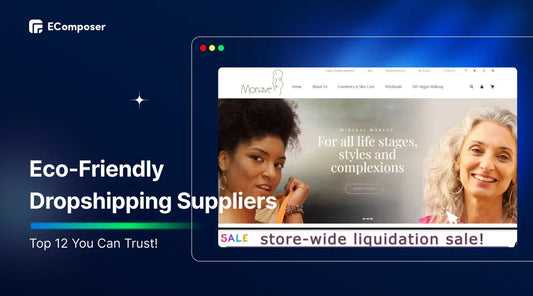
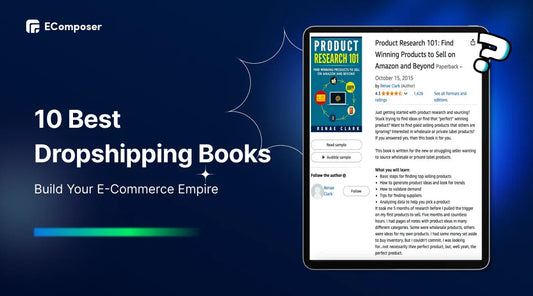







0 comments